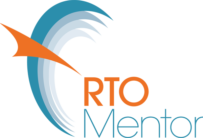When setting up your RTO you need to seriously consider how you will maintain a strong professional culture in the workplace. Will this mean using best practise approaches to:
- recruitment,
- job design,
- industrial relations,
- workplace and performance management for your trainers, assessors and administrative staff
- professional development?
Whatever approach you chose, to maintain a quality RTO means including the items in your planning and budget.
Some key features and strategies that might characterise having a quality RTO might also include the following:
- Gathering comprehensive data about your clients, their industry and the changes taking place.
- Develop a matrix to define the professional and workforce development—and the associated skills sets and knowledge—that may be required for particular training and assessment.
- Linking professional and workforce development strategies to your RTO business strategies.
- Ensure that professional and workforce development approaches are effectively linked to the performance review system.
- Ensure that a proper balance is struck between maintenance of vocational currency and the development of appropriate and higher-level training skills.
- Explore ways to recruit—and retain—the best possible staff. Amongst other things, this will require attention to job design, industrial terms and conditions (including wages), quality of working life, respect for the professionalism of staff and their work, and appropriate professional and workforce development to provide career options.
- Ensure that there is an effective process of staff induction, and that staff are mentored as required. This involves recognising and making sure that the role of workplace mentors is properly legitimised within the system and that their role supported by appropriate training and rewards.
- Develop a wide range of opportunities to undertake formal professional and workforce development.
- Human resource management practices need to be developed that encourage a planned approach to professional and workforce development—for both individuals and work teams. This involves processes where staff are:
challenged
encouraged to learn, and learn by doing
exposed to new ideas
able to consolidate their learning by immersion in the process and active reflection
able to network both within and outside their organisation
Implement processes which evaluate and measure the effectiveness and outcomes of professional and workforce development initiatives.
Leaders and managers of RTO’s need to play a key role in supporting professional and workforce development for both themselves and their staff.
